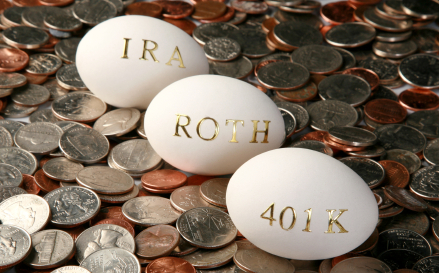Playing Catch Up With Your Self-Directed IRA Savings
 According to a recent study, only 28% of respondents are on track or have achieved their goals for their retirement savings. If you fall within the 72% of individuals who are not on track, you can combine your expertise in real estate along with “catch-up” contributions to get you back on track. Depending on your age and your desired retirement date, including the following in your catch-up process can help you to increase the money in your retirement account thus increasing the capital that you have available to invest in real estate with your Self-Directed IRA.
According to a recent study, only 28% of respondents are on track or have achieved their goals for their retirement savings. If you fall within the 72% of individuals who are not on track, you can combine your expertise in real estate along with “catch-up” contributions to get you back on track. Depending on your age and your desired retirement date, including the following in your catch-up process can help you to increase the money in your retirement account thus increasing the capital that you have available to invest in real estate with your Self-Directed IRA.
Use the Catch-Up Provision for Self-Directed IRAs
If you are at least age 50 by the end of the year, you are eligible to contribute amounts above the regular contribution limits, providing your contributions do not exceed your eligible income for the year. These amounts are referred to as catch-up contributions. The following are the types of catch-up contributions available:
- $1,000 to traditional and/or Roth IRAs: This can be split between your Roth IRA and your traditional IRA, or contributed to one of the two. This is in addition to your regular $5,000 contribution limit.
- $5,500 to 401(k) and 403(b): This can be split between your 401(k), 403(b), Thrift Savings and SIMPLE IRA plans (For SIMPLE IRAs, the limit is $2,500).
If you are eligible to contribute the maximum catch-up amounts to both IRAs and 401(k)/403(b) accounts over a 20-year period, you could accumulate as much as $30,969 to your IRAs and $170,331 to your 401(k)/403(b) for a total of $201,300, assuming a 4% rate of return. This would be in addition to your regular contribution and any income earned by the real estate investments in your self-directed account.
Claim Tax Deductions and Tax Credits
Affordability is a common reason given by individuals who do not make contributions to retirement savings account. For these individuals, covering everyday expenses might seem to make it impossible to save for retirement. However, there are provisions that, if taken advantage of, soften the financial burden of contributing to a retirement account. These include:
- The Saver’s Credit: The saver’s credit allows eligible individuals to receive a nonrefundable tax credit of up to $1,000 for contributions they make to IRAs and employer plans such as 401(k) and 403(b) plans.
- Tax Deductions: Eligible individuals can claim tax deductions contributions they make to traditional IRAs.
- Pre–tax Contributions: Salary deferral contributions can be made on a tax-deferred basis, which reduces the amount of income on which the individual pays income tax.
In all these cases, the cost of making the contribution is reduced by the tax benefit. While the reductions may not be dollar for dollar, they help to cushion the financial burden of funding the retirement account. If you are one of these individuals for whom affordability is an issue, these tax benefits could allow you to save more than you thought you could afford, if you meet the eligibility requirements.
Realistically Speaking
The explanations are intended to show that it is possible to play catch-up with your retirement savings, even if the rate of catch-up is only a percentage of the numbers used above. Consider too that the limits mentioned above are in effect for 2014, and could be increased in future years for cost of living adjustments.





